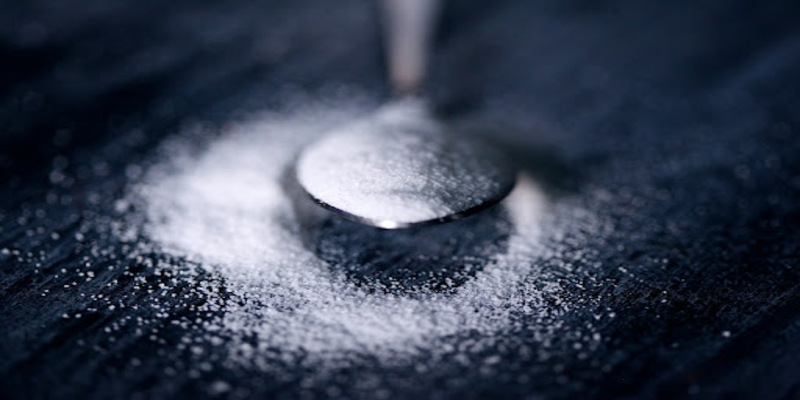Raised and spherical skin lesions are a hallmark of chronic nummular ezcma, aka discoid eczema, a skin condition identified by raised, circular areas. As the Latin word nummular means "coin," the patches look like coins. Lesions of this kind often itch, crust, and ooze clear fluid.
There is no relief in sight for this issue. A flare-up or episode may happen several times over a long period, and a patch may persist for many weeks or months. Scoria dermatitis and nummular ezcma are alternative terms for the same condition. The prevalence of discoid eczema is estimated to be 2% annually. The incidence appears to be greater in men than in women. The most common age groups for discoid eczema are men aged 5065 and women aged 1525. However, it may affect anybody. Children seldom experience it.
Signs and Symptoms of Nummular Eczema

Those who suffer from nummular ezcma may notice the following symptoms.
Tiny Bumps
The first indication is frequently that little pimples or blister-like lesions may occur after a skin injury. For example, nummular eczema round patches might appear on both knees if you itch the back of one of them.
Coin-shaped Spots
The little bumps will eventually combine to produce crust, which is why coin-shaped patches are the name given to this kind of eczema. The term "nummular" describes these round patches because they resemble coins with an incorrect shape; their shape may vary from round to oval.
Itchy Dry Skin
The patches in the inner thigh eczema could be accompanied by severe itching, which often worsens when you try to relax or sleep. Some say nummular eczema may make their skin feel itchy or even burn, increasing infection. In between the patches, you could find dryness and flakiness.
Flatten Spots
Spots gradually disappear, revealing smoother areas. After an acne scar has healed, a flat, discolored skin round patches may reveal itself. One skin reaction that occurs when nummular eczema cures is the appearance of a flat spot. It is not nummulular eczema. Those who have skin discoloration tend to have darker complexions.
New Flare-ups
For some people, inner thigh eczema never goes away. As a result, the spots may not disappear completely, or new ones may not appear for a while. Fever flare-ups may not leave coin-shaped traces but rather large raised areas.
Discoid Eczema Causes
Mystery surrounds discoid eczema's cause. Discoid eczema causes dry skin. Drier skin may cause this because it disrupts the epidermis' protective lipid coating. By preventing allergens from accessing the skin, this barrier inhibits allergic reactions. Allergy or inflammation may cause eczema. For certain clinicians, discoid eczema defines adult-onset allergic dermatitis.
Medications may induce inner thigh eczema in some persons. Interferon and ribavirin treat hepatitis C. Minor skin injuries, or insect bites may cause discoid eczema outbreaks. Discoid eczema sufferers may also have contact dermatitis due to the absence of their skin's protective fatty layer. After touching anything unpleasant, the skin develops contact dermatitis. Nickel in jewelry and belt buckles is one example. Nickel is found in cosmetics, lotions, ointments, leather additives, and more.
Discoid Eczema Treatment

Medications are available that may help manage the disease and reduce its symptoms. These are among the treatments:
Skin Hydration Treatment
Remollients are called "moisturizers." Lotions, creams, ointments, and bath/shower additives are used to prevent dry skin. Emollients may moisturize skin better than soaps. Moist skin and inner thigh eczema after a shower or bath should be moisturized.
Applying emollients as prescribed is the most important part of treating eczema, particularly discoid. Emollients keep skin moist and protect it from environmental hazards. Apply to the entire skin, not just discoid eczema. Lack of hydration won't treat discoid eczema. The likelihood of another conflict must decrease.
Many brands make emollients, from mild ointments to heavier lotions. Ointments, creams, and lotions are differentiated by oil-to-water ratio. Creams have moderate lipids, ointments mostly, and lotions little. More lipids mean more grease and stickiness. The messiness of an emollient determines its effectiveness and durability, while a larger lipid content makes it greasier and thicker. Emollients and Eczema Creams is a standalone pamphlet with extra information. Sometimes, petroleum jelly may moisturize skin.
Topical Steroids
Topical steroids, such as ointments and creams, are intramuscular equivalents. Topical steroids may soothe discoid eczema. Instead of creams, ointments may better protect the skin by holding moisture and functioning as a barrier. Never use steroid cream or lotion on healthy skin during discoid eczema outbreaks. Daily use of steroid cream may cause skin concerns, including thinning. The topical steroids for eczema pamphlet has further information.
Some discoid eczema may be treated with a topical steroid and moist compress. Completely moisten the skin with lukewarm water. Apply steroid ointment to the skin, letting it sit for an hour. Place damp napkins or bandages over it. Dermatologists prescribe these treatments when needed. Very rarely, oral or injectable steroid pills are used to treat discoid eczema. When applying the topical steroid, use the emollient first. Before using a topical steroid, use an emollient for 1015 minutes. Emollients should soak before steroids. The skin should be wet or sticky (not slippery) before the steroid is applied.
Other Treatments
Discoid ezcma spots may need antibiotics due to bacterial infiltration. Depending on illness severity, oral tablets, and topical creams are possible dose types. Taking an antihistamine before bed is good advice for itching and difficulty sleeping. You may feel sleepy the following day after taking antihistamines, so carefully drive or use heavy equipment.
Tar formulations may aid long-standing thickened and scaly skin. For discoid eczema, pimecrolimus and tacrolimus may reduce inflammation. Some people whose symptoms don't respond to steroids may try them. UV light therapy may help rare discoid eczema and may relieve inner thigh eczema skin. However, you should be careful since UV rays may harm the skin.
Increasing skin cancer risk is one. The benefits and dangers of this therapy must be considered. This surgery is performed when other discoid eczema treatments fail, or the severity warrants it. Anti-inflammatories may help discoid eczema. For instance, ciclosporin. Remember that they are only used for severe discoid ezcma that has not responded to previous therapies.







